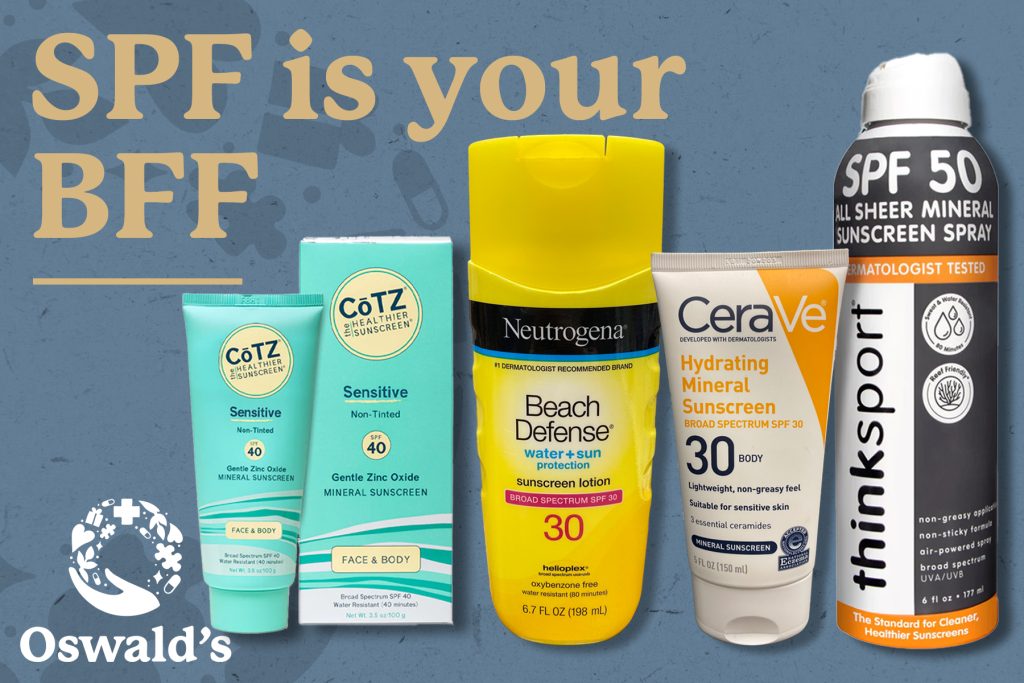It is that time of year again. The sun is out longer and burning hotter. You can see the sun’s light and feel its heat, but you cannot see or feel its radiation. Ultraviolet (UV) radiation is a type of energy emitted from the sun. It can reach you directly from the sun, reflect off surfaces, and even be scattered by particles in the air.
Essentially, UV radiation is everywhere and there’s no way to escape it. While we have fun in the sun during these spring/summer months, it is important that we are aware of the damage UV radiation can cause to our skin and how to protect ourselves from harmful rays.
There are two types of rays that can damage the DNA in your skin cells; UVA and UVB rays. UVB rays cause sunburns and play a key role in developing skin cancer. A sunscreen’s SPF number refers mainly to the UVB protection it provides. UVA rays play a role in tanning, wrinkling, and aging. A “broad spectrum” sunscreen will cover both UVB and UVA rays.
On all sunscreen bottles, there will be a variety of different SPF amounts. What exactly is SPF and how do you know which one to choose? SPF stands for “sun protection factor.” It is the amount of solar energy (UV radiation) required to produce sunburn on protected skin (presence of sunscreen) relative to the amount of energy required to produce sunburn on unprotected skin.
In theory, the higher the SPF amount, the better protection. However, a very high SPF can give a false sense of security. People tend to stay out in the sun longer and never reapply. That ultimately defeats the purpose. There is a general misconception that SPF relates to the time in the sun but in actuality, it relates to the amount of sun exposure.
Factors that influence the amount of sun exposure:
- Intensity of the sun – This varies throughout the day but the general rule is the sun is more intense at midday. Solar intensity is also greater on clear days than on cloudy days.
- Skin type – Fair-skinned individuals absorb more solar energy than dark-skinned individuals under the same conditions.
- Amount of sunscreen applied – more sunscreen results in less solar energy absorbed.
- Frequency of reapplication – the more frequent sunscreen is applied the less amount of radiation you are exposed to. Sunscreen should be applied more frequently during swimming and high levels of physical activity.
So what is the best strategy for protection when in the sun? The Skin Cancer Foundation recommends a water-resistant, broad-spectrum sunscreen with an SPF of 30 or higher for any extended outdoor activities. Apply a generous amount 30 minutes before sun exposure and reapply every two hours or immediately after swimming or sweating.
Protect the skin you’re in. REAPPLY, REAPPLY, REAPPLY! Your skin is your largest organ. Take care of it!

